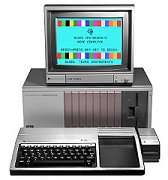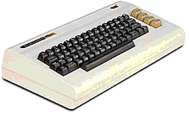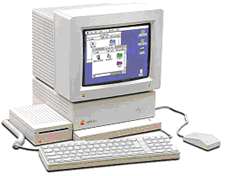Tech Talk
Remember When…
By Jamie Allison
Personal computers have been around since the late 60’s – early 70’s. Now they are a part of our everyday lives. Simply put, there isn’t anything you can’t do with a computer it seems such as communicate with family and friends, start a business, record an album, create a work of art, play an online game with a friend in another country – just to name a few.
But sometimes I like to look back at when it all started and remember the first computers I had when I was young and look how much they have changed. Below are just a few that I started out with…
The Texas Instruments TI-99/4A
In February 1983, TI lowered the price to $150 and was selling the computers at a loss. And in June 1983, TI released a redesigned beige cost-reduced version that it sold, also at a loss, for $99. TI lost $100 million in the second quarter of 1983 and $330 million in the third quarter. In October 1983, TI announced it was exiting the home computer business. The 99/4A became the first in a series of home computers to be ‘orphaned’ by their manufacturer over the next few years. A total of 2.8 million units were shipped before the TI-99/4A was discontinued in March 1984.
The Commodore VIC-20 was an 8-bit home computer which was sold by Commodore Business Machines. The VIC-20 was announced in 1980 roughly three years after Commodore’s first personal computer, the PET. The VIC-20 was the first computer of any description to sell  one million units.
one million units.
The VIC-20 was intended to be more economical than the PET computer. It was equipped with only 5 KB of RAM (of this, only 3583 Bytes were available to the user) and used the same MOS 6502 CPU as the PET. The VIC-20’s video chip, the MOS Technology VIC, was a general-purpose color video chip designed by Al Charpentier in 1977 and intended for use in inexpensive display terminals and game consoles, but Commodore couldn’t find a market for the chip. As the Apple II gained momentum with the advent of VisiCalc in 1979, Jack Tramiel wanted a product that would compete in the same segment, to be presented at the January 1980 CES. For this reason Chuck Peddle and Bill Seiler started to design a computer named TOI (The Other Intellect).
The Apple IIGS, the fifth model inception of the Apple II, was the most powerful member of the Apple II series of personal computers made by Apple Computer. At the time of its release, it was capable of advanced color graphics and then-state-of-the-art sound synthesis that surpassed those of most other personal computers, including the black and white Macintosh (apart from a lower vertical resolution). “GS” referred to its enhanced graphics and sound capabilities, which greatly surpassed previous models of the line.
 The machine was a radical departure from any previous Apple II, with its true 16-bit architecture, increased processing speed, direct access to megabytes of RAM, wavetable music synthesizer, graphical user interface, and mouse. While still maintaining full backwards compatibility with earlier Apple II models, it blended the Apple II and aspects of Macintosh technology into one. The Apple IIGS set forth a promising future and evolutionary advancement of the Apple II line, but Apple paid it relatively little attention as the company increasingly focused on the Macintosh platform.
The machine was a radical departure from any previous Apple II, with its true 16-bit architecture, increased processing speed, direct access to megabytes of RAM, wavetable music synthesizer, graphical user interface, and mouse. While still maintaining full backwards compatibility with earlier Apple II models, it blended the Apple II and aspects of Macintosh technology into one. The Apple IIGS set forth a promising future and evolutionary advancement of the Apple II line, but Apple paid it relatively little attention as the company increasingly focused on the Macintosh platform.
The Apple IIGS was the first computer produced by Apple to use a color graphical user interface, as well as the “Platinum” (light grey) color scheme and the Apple Desktop Bus interface for keyboards, mice, and other input devices. It was also the first personal computer to come with a built-in “wavetable” sample-based synthesizer chip, utilizing technology from Ensoniq. The machine outsold all other Apple products, including the Macintosh, during its first year in production.
I have only list a few old computers from the past but there were so many, if you would like to see more of them, please go to: www.oldcomputers.net
Jamie Allison, MCSA MCP Net+ A+, can be contacted at PC Piece of Mind Computer Services, jallison@pcpieceofmind.com or at 561-827-3792. AOL IM: pcpieceofmind. Visit www.pcpieceofmind.com. Offering Computer Support & Troubleshooting, Desktop & Laptop Repair, Network Installations, Web Design & Maintenance, Web Hosting & Domain Name Services, Digital Photo Editing & Enhancement, Custom PC’s, eBay Auction Service, Computer Consulting & Training. We make computers fun again!

